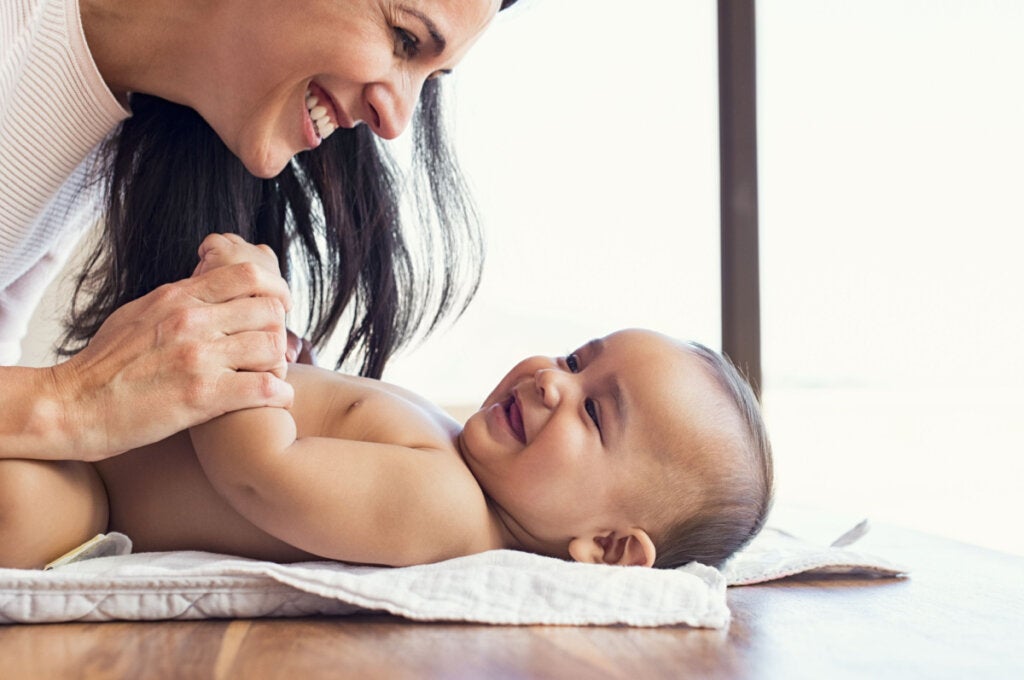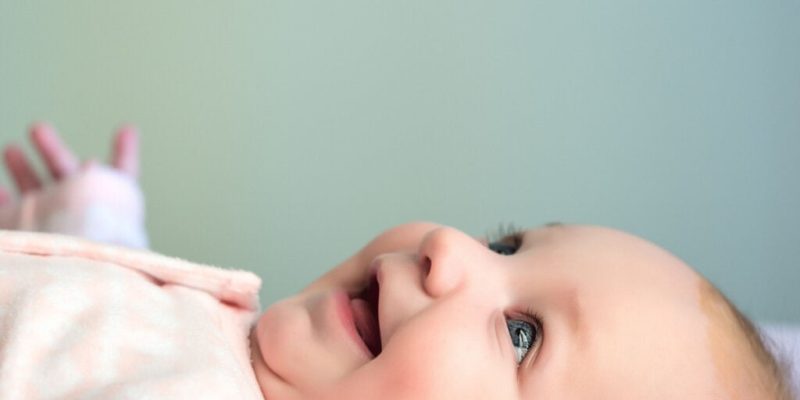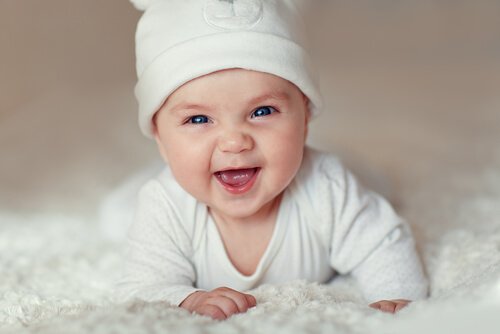There are few moments as enjoyable for parents as when they see their baby smile for the first time. Indeed, a baby’s first smile is a source of utter joy. When it happens, parents feel they’ve started to communicate a little more with their child. However, is this really the case? We’re going to explain the curious evolution of a baby’s smile.
Smiling is a central communicative act in the human being. It helps us to generate closeness with others, demonstrates that we’re good people, and expresses our pleasure and well-being. Therefore, it’s hardly surprising that this innate habit is one of the first we develop, long before language and independent of our cultural environment.
The reflective smile
If you have a newborn baby, you’ll probably have seen them make a small grimace similar to a smile at some point. It may even be that during the last ultrasound before they were born, you caught them ‘smiling’. Indeed, these expressions have been observed in fetuses in the womb from the 23rd week of pregnancy.
As a rule, these types of smiles aren’t considered conscious or intentional gestures, but rather automatic reflexes. It’s understood that they have no communicative intention and that they only constitute an automatism. However, this isn’t entirely clear.
In fact, it appears that it’s also possible that they’re emotional expressions that arise due to a state of well-being. Some research has demonstrated that the smallest babies smile in response to caresses, or as a reaction to certain aromas and flavors. In addition, it’s been seen that during wakefulness, smiles are more numerous and morphologically different from those that occur during sleep. This tends to suggest that these facial expressions could have a social meaning.
The social smile
By the time a baby is four to five weeks old, we can consider their smile to be real. By this time, the gesture is produced in response to a stimulus from the environment. As a rule, this consists of contact and interaction with another human being. Thus, if the mother, father, or another person approaches the child, looks at them, and smiles at them, they respond. Although they can also smile at voices and sounds that are familiar or pleasant to them.
One interesting fact is that this reaction will become increasingly selective. At first, a baby will smile at anyone but, as they grow, they learn to distinguish between strangers and acquaintances. Eventually, they’ll only smile at those they like the most. This usually starts to happen around five months of age.
Their ability to communicate through smiling will also increase and their first laughs usually occur between four and six months. They start to laugh out loud at games, songs, or sufficiently striking external stimuli. They may even accompany their facial expressions with the movement of their feet and hands.
Differentiating between the reflexive and the social smile
There are individual differences when it comes to the evolution of a baby’s smile. There’s no exact moment when they change from a reflexive smile to a social one. So, how can we distinguish whether it’s a true communicative action? The answer lies mainly in the context.
If the baby is smiling socially, they make eye contact and the smile lasts longer. They observe their interlocutor with interest and attention and wait for a response from them. They may also smile in response to an adult-initiated interaction. In short, there’s an intention to transmit.
This is especially clear in the case of the anticipatory smile. It arises when the baby wants to draw attention to an object or share with their interlocutor how much they like it or how it surprises them. To do this, they’ll look at the object while smiling, then look at their interlocutor, and then return to the object.

The importance of responding to a baby’s smile
The fact that a baby’s smile is innate isn’t accidental. In fact, it’s an important survival mechanism. Thanks to their smile, the baby can capture the attention of others and begin to bond socially and emotionally with them. It’s a kind of claim that allows them to have adults close, just like crying, only in this case it communicates joy, well-being, and satisfaction.
For this reason, it’s essential that the other party contributes to the interaction that the baby has initiated. In other words, it’s extremely important that the mother, father, or caregiver responds to their child’s smiles.
In a famous experiment called The Still Face (the unresponsive face) several mothers were asked not to interact with their one-year-old babies and not to respond to their smiles or communicative gestures. After a few moments, the babies tried all means to regain interaction with their mothers. Failing to do so, most began to cry. This is hardly surprising as babies are social beings and their smiles are one of the great means they have of communicating. For this reason, it’s necessary to pay attention to their evolution and know how to respond to them sensitively and appropriately.
The post The Curious Evolution of a Baby’s Smile appeared first on Exploring your mind.



















Comments